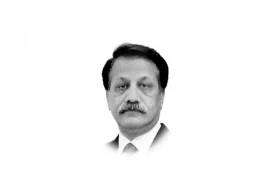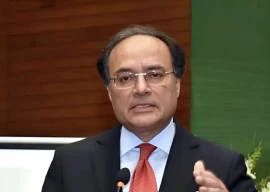
Tactical nukes to counter India’s cold start doctrine: Aizaz
The potential of the Islamic State increasing its footprints, particularly in Afghanistan and even in certain Central Asian states, with sprinklings in Pakistan has become a reality. There is a belated appreciation among US policymakers that Pakistan has a strategic importance in its own right and maintaining close relations with it is in the US interest. Moreover, the region’s geostrategic significance has enhanced considerably as a consequence of China’s deep involvement in the region. The multi-billion dollar China-Pakistan Economic Corridor project is likely to alter the region’s potential and dynamics and the US does not want the vacuum to be filled entirely by China.
The US also expects Pakistan to use its influence with the Taliban leadership in bringing them to the negotiating table and persuading them to abandon the insurgency or at least maintain a ceasefire while negotiations are initiated. Nawaz Sharif will try to emphasise that Pakistan’s interest in maintaining relations with the Taliban Shura and lethal groups like the Haqqani network is to retain leverage for persuading them to engage in dialogue and stop fighting. Pakistan also wants Washington to realise that taking a very hard position against the Taliban and their affiliates could push them to join forces with the Tehreek-e-Taliban Pakistan.
US exploring deal to limit Pakistan’s nuclear arsenal
Pakistan maintains that the Taliban are a reality with a substantial following and the Afghan government has to find ways of accommodating them in the power structure. There is a genuine realisation both within the civil and military elite that it is in Pakistan’s vital interest that a peaceful resolution to the Afghanistan conflict is reached. Pakistan has got itself so intractably involved in the quagmire that is Afghanistan that despite sincere efforts in pursuit of peace, it still comes under severe criticism from the Afghan government and civil society. Apart from doing incalculable damage to Pakistan’s economy, internal stability and national cohesion, the Afghan fallout has soiled its reputation. Of course, Pakistan itself is partly to blame for this predicament, having blindly jumped into supporting the Afghan jihad against the Soviets in the late 1970s and then supporting the Taliban government in the 1990s, and later failing to prevent them from carving sanctuaries in certain parts of Fata and Balochistan. But that is history. Pakistan’s current leadership, ever since President Ashraf Ghani took over, has been keen to establish a durable and mutually beneficial relationship. Progress, however, has been slow and the temporary seizure of Kunduz by the Taliban has made matters worse. Surely, the prime minister will seek US support in allaying Afghanistan’s misgivings and reiterate his government’s commitment to make sincere efforts in securing peace.
PM heads to US for talks with Obama on Afghan peace
Nawaz Sharif is also going to draw President Obama’s attention to India’s involvement in Balochistan, Fata and Karachi. In all likelihood, Washington’s response will be that this matter is taken up bilaterally with the Indian leadership.
The prime minister would be raising the issue of Pakistan’s inclusion in Nuclear Suppliers Group (NSG) and other international export control regimes. If this concession is extended to India, it should be similarly relaxed for Pakistan, as its energy deficit is even greater. Moreover, Pakistan is of the view that acceptance of India to the NSG will allow it to divert its indigenous production and build stocks at a faster pace. The chances of this request materialising in the near future, however, are slim going by the statement of the State Department that such a proposal is premature. Lobbies opposed to Pakistan try to keep memories of the AQ Khan episode alive despite our efforts at strengthening the nuclear safety and security regime.
President Obama is likely to press Pakistan on agreeing to the commencement of negotiations on the Fissile Material Cut off Treaty. Pakistan finds it unacceptable to cap its enrichment programme until it has built sufficient stocks to match India’s growing inventory. On the one hand, the US is counselling nuclear restraint to Pakistan and on the other, selling state-of-the-art conventional weapons to India! The West should know by now that sanctions or the threat of sanctions have not worked in the past and are unlikely to make any significant difference this time either. Facilitating India to build its fissile material stocks is part of the broader US strategy to countervail China’s growing power at the regional level, but this has greater relevance for Pakistan’s security.
An uncertain future
The US is also expected to raise its concern regarding Pakistan’s development of short-range missiles that it justifies as a riposte to the Cold Start doctrine. Although the military establishment has tried to assure the US that its nuclear assets are safe and secure, the US continues to raise the issue, being fearful of the general security situation in the region.
The previous carrot-and-stick US policy against the middle powers is no more valid in the context of Pakistan. There is, however, now a different geostrategic picture that gives Pakistan other options to counter such pressures. It enjoys extremely close strategic ties with China and is developing relations with Russia that has created political and economic space and injected a sense of confidence in policymakers. Having said that, Washington retains the ability to influence events and harm countries that go against its wishes. We cannot ignore that the US is one of our largest trading partners and accounted for nearly 16 per cent of our total exports and bilateral trade in FY2015. It also remains the most attractive source of sophisticated state-of-the-art weapons and equipment.
Published in The Express Tribune, October 21st, 2015.
Like Opinion & Editorial on Facebook, follow @ETOpEd on Twitter to receive all updates on all our daily pieces.














COMMENTS
Comments are moderated and generally will be posted if they are on-topic and not abusive.
For more information, please see our Comments FAQ